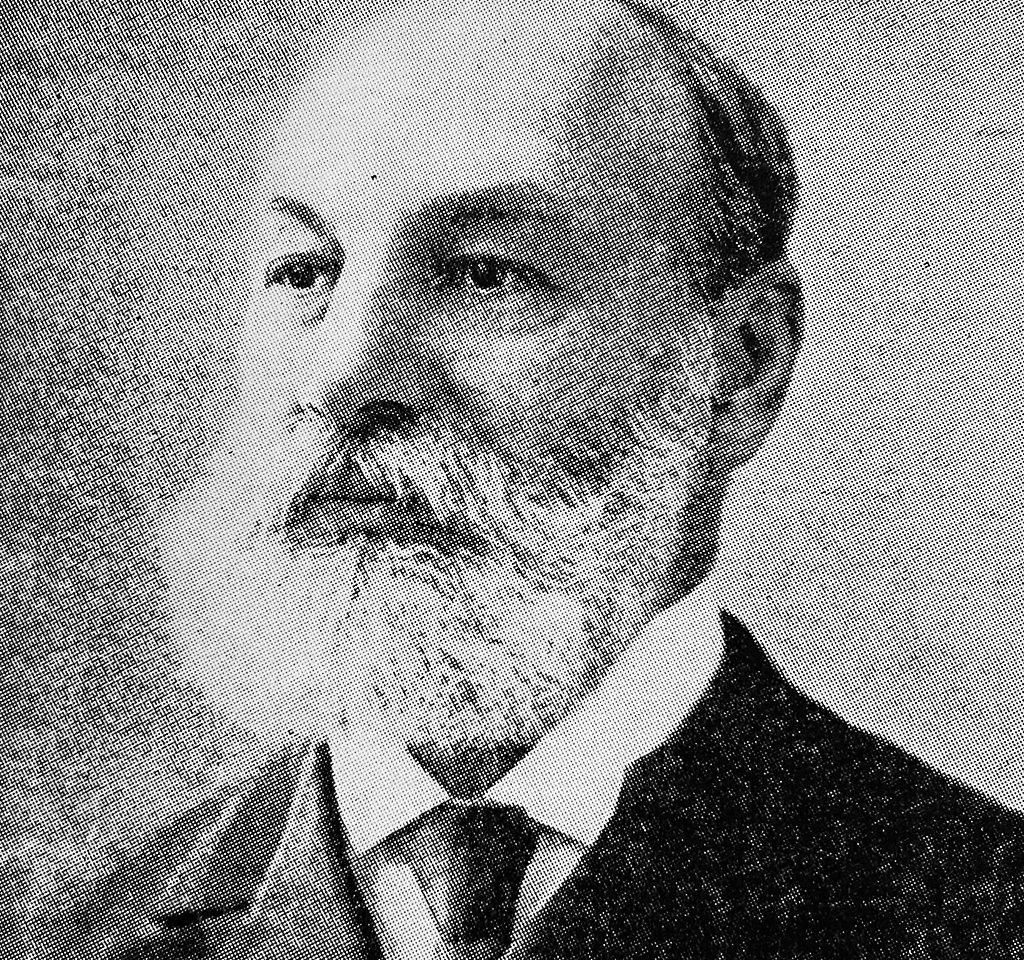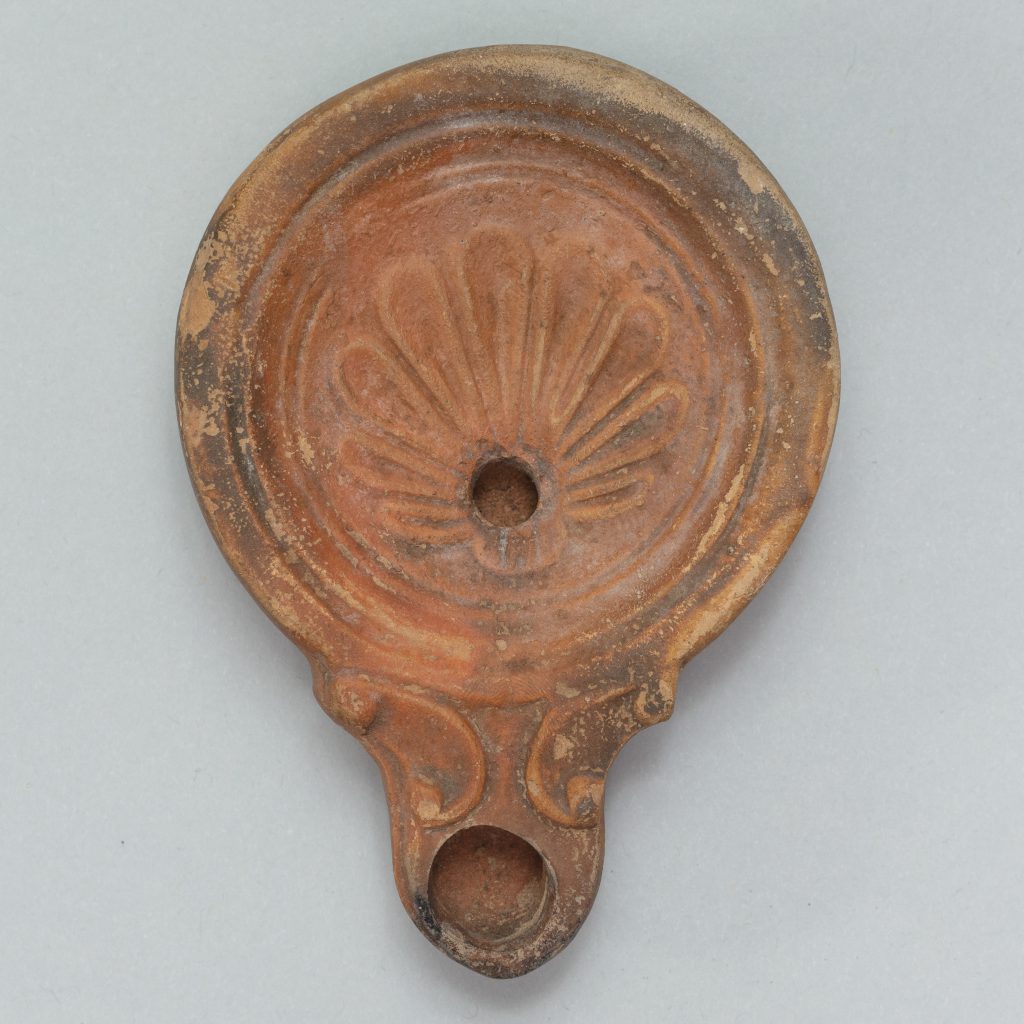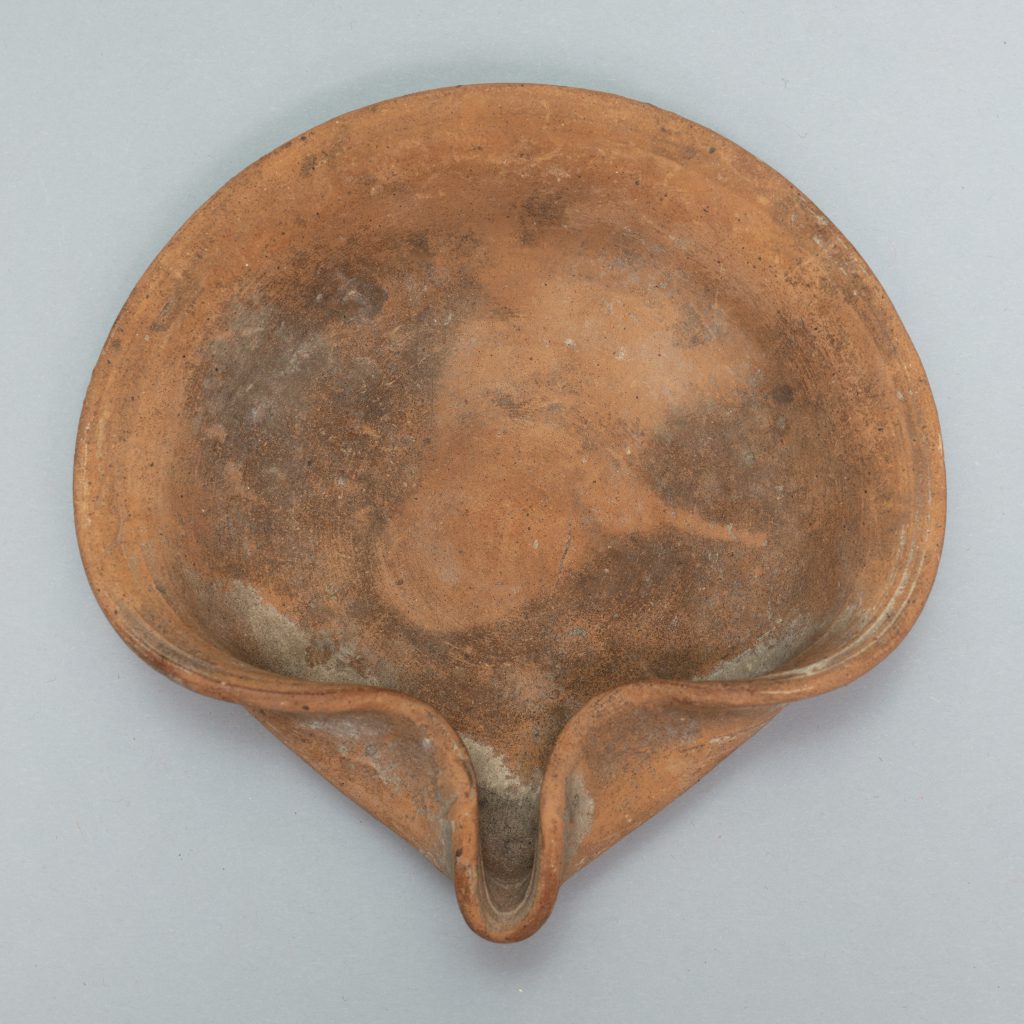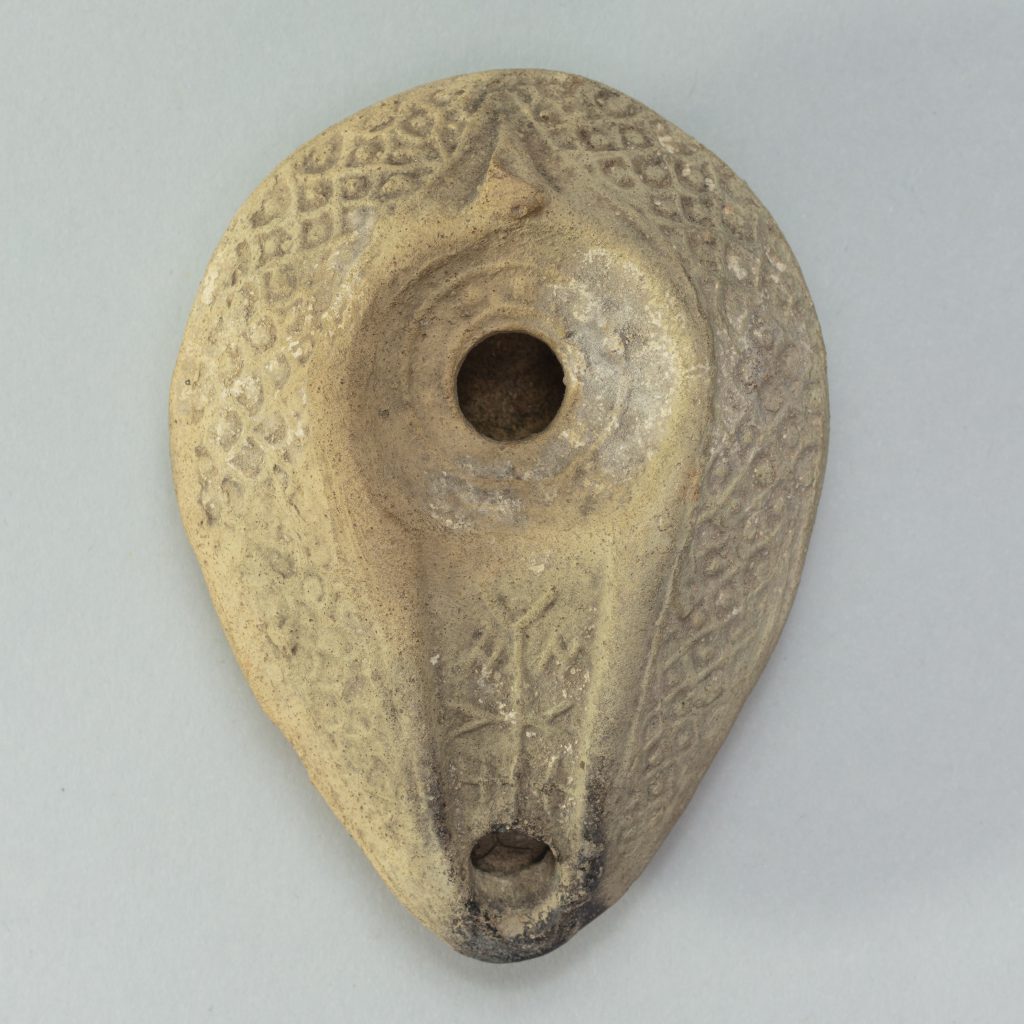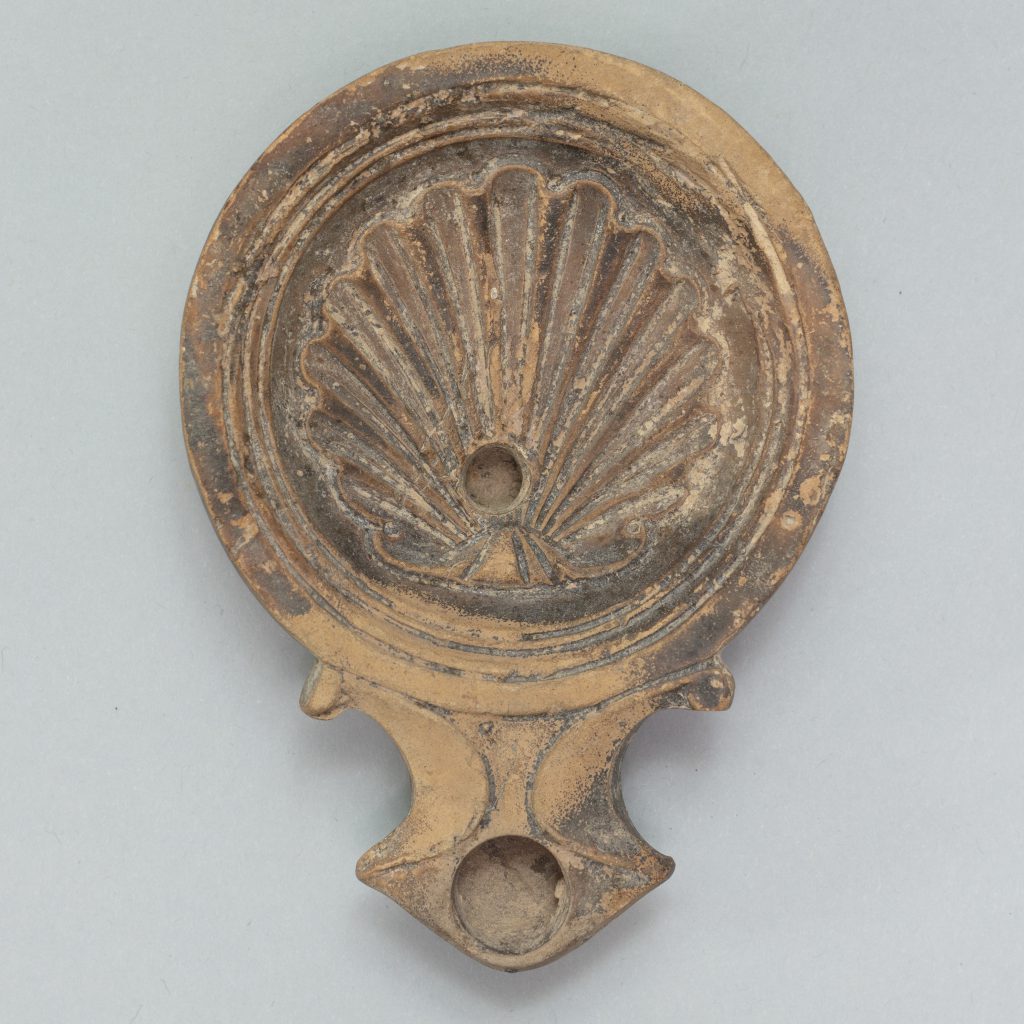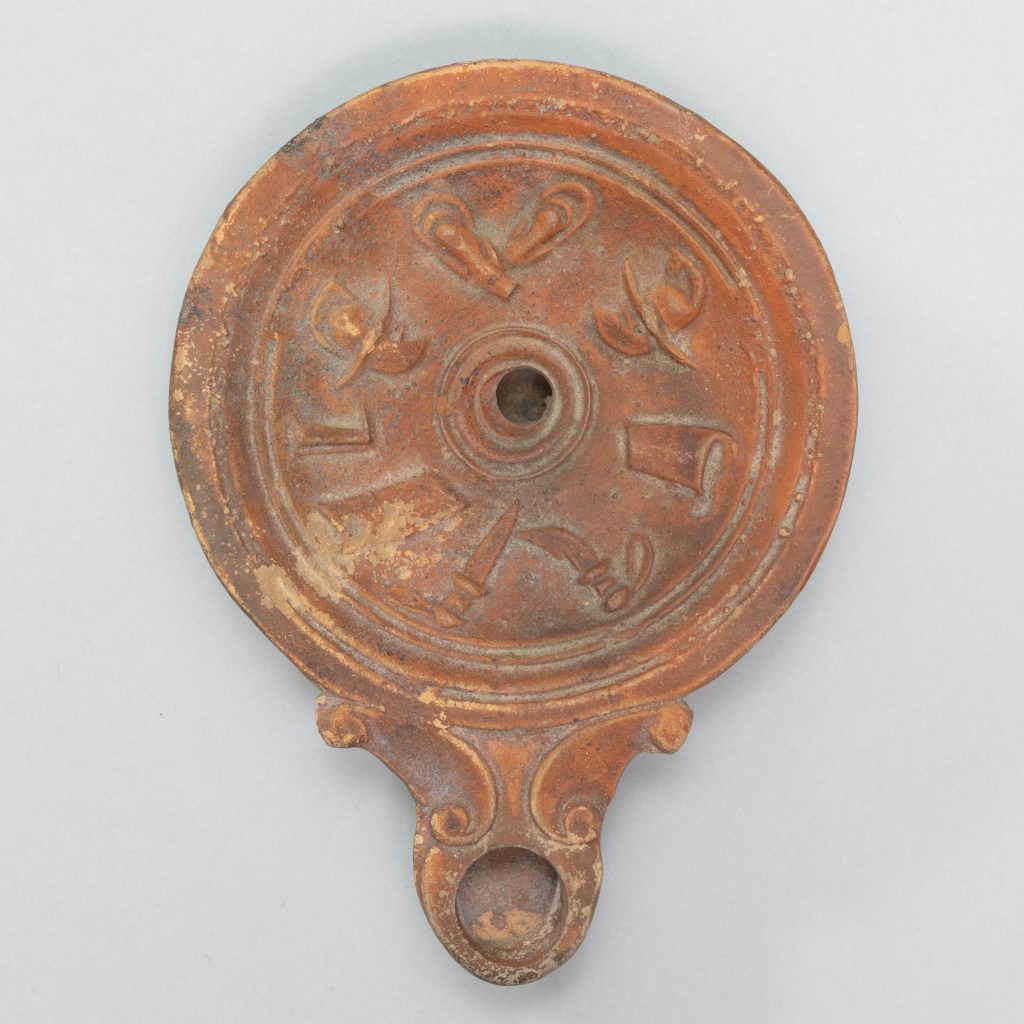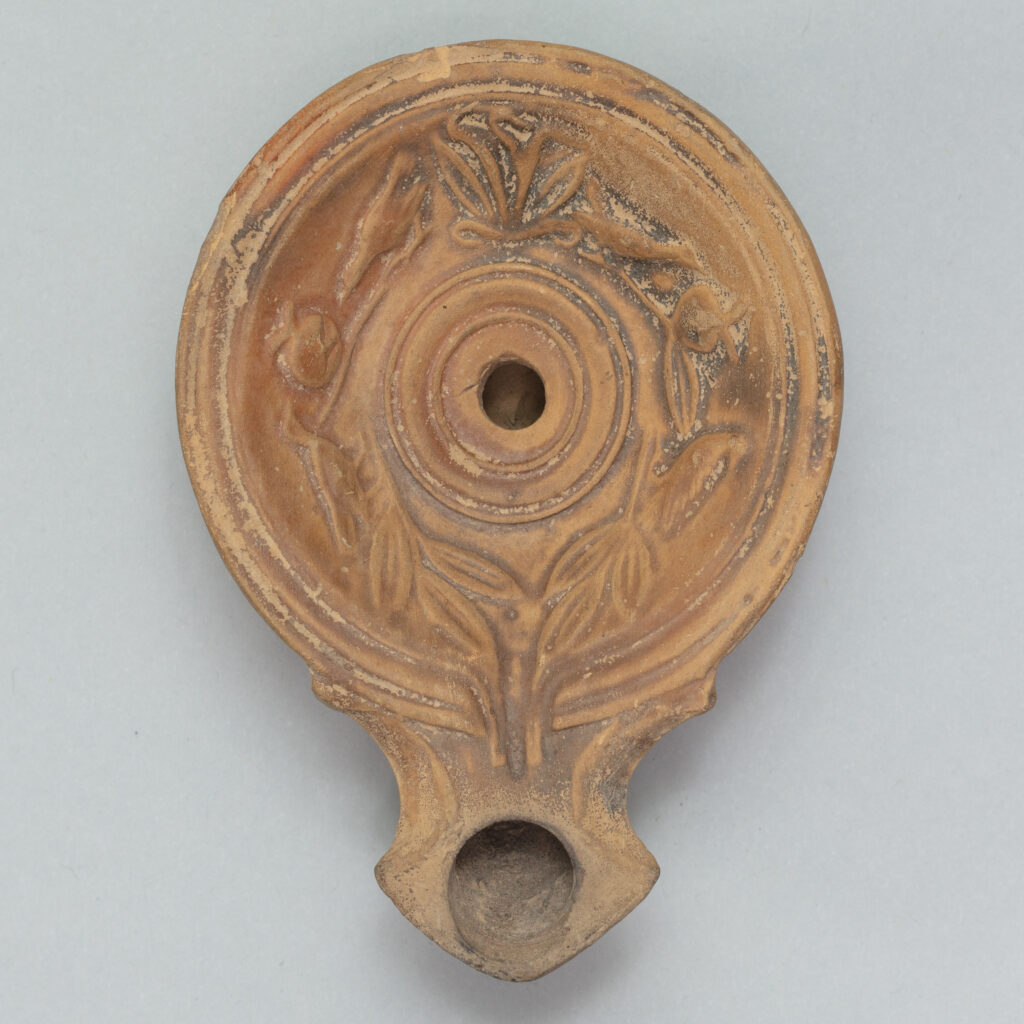
Gift of Mr. Dana C. Estes, Honorary Degree 1898
1902.4This Roman discus lamp features a scene depicting a less familiar spectacle from Roman entertainment involving wild animals in the arena. In the discus, the wide concave space where the lamp was filled with oil, a bestiarius flips acrobatically over a bear. The bestarii were gladiators who fought ferocious beasts in the arena; some were specially trained professionals like today’s matadors, while others were prisoners condemned to combat.
Lamps depicting scenes of gladiators and combat were common in Roman Cyprus, and it is easy to imagine a lamp like this being collected by an ancient Mediterranean as a memento of a gladiatorial match enjoyed.
As everyday objects that provided lighting from the Bronze Age on, ancient lamps were made of a variety of materials, including stone and various metals, but most were made of clay. Their design ranged from simple, utilitarian objects to ornate and intricate designs fit for ceremonial purposes. Beginning in the Roman period, lamps were commonly produced using molds. The mold-making process enabled the production of hundreds of identical lamps at a time, allowing for the inclusion of decorative elements and figures on even the most affordable lamps. Mold-made lamps like these could be mass-produced cheaply and efficiently, an important innovation as the functional lifespan of lamps was relatively short. Lamps were manufactured locally and readily available at markets across the Roman Mediterranean but may have also been purchased as souvenirs at spectacles and during travels. From the Roman period on, mold-made lamps include a dizzying array of decorative schemes, including mythological figures, athletes and gladiators, and floral and faunal decoration.
For collectors of the modern era, the ubiquity of lamps in archaeological excavations made them easy to acquire and popular souvenirs among tourists. Their popularity also encouraged a thriving market for lamps looted from ancient sites, and the simplicity of their manufacture (especially compared marble statuary or painted Greek vases) promoted forgeries, not unlike the market that emerged around Tanagra figurines or shabtis in Egypt. Because of their ubiquity, scholarship around lamps has produced a refined typology (this lamp is of the Loeschcke type VIII with a pierced handle) that makes lamps useful in dating archaeological excavations. Most of the lamps in the Estes collection are believed to have been excavated by Alessandro Palma di Cesnola during his time in Cyprus in the late nineteenth century and were probably collected by Dana Estes at one of a series of later sales of the collection in London between 1883 and 1892.
1876–8, excavated in Cyprus by Major Alessandro Palma di Cesnola under the patronage of Edwin Henry Lawrence; 1879, Lawrence-Cesnola Collection, London; 1892, purchased by Dana C. Estes at Sotheby, Wilkinson, and Hodge auction, London; acquired by Bowdoin College Museum of Art in 1898, gift of Dana C. Estes.
Collector
Maine native Dana C. Estes (1840–1909) was a founding partner of a prominent Boston bookseller and publishing house, Estes & Lauriat (est. 1872), which later operated as Dana Estes & Co. (1898–1909).
